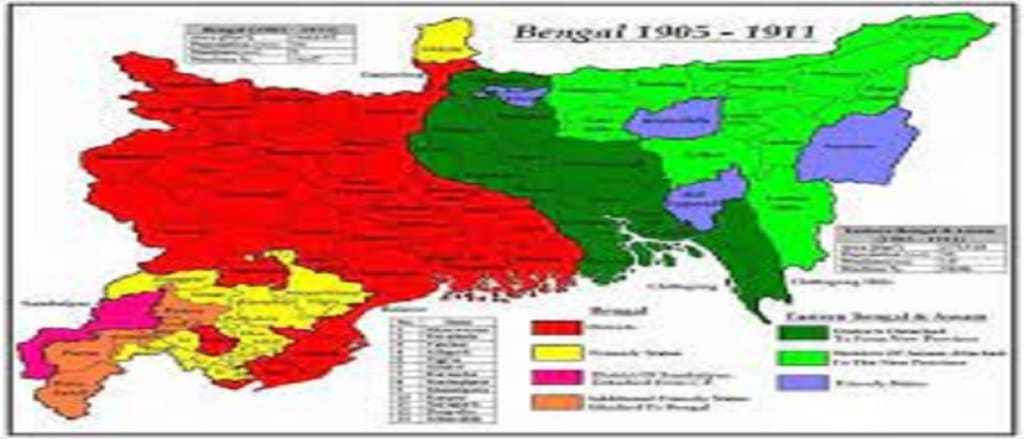
Introduction
In 1899, Lord Curzon was appointed Viceroy of India. He was a capable and effective manager. After taking a thorough tour of Bengal province, he concluded that it was too large to be efficiently administered. The provincial Governors have previously voiced their dissatisfaction with the administrative challenges they faced in the big province. Given the province's size and large population, they had suggested its division. The split was completed in 1905 as a result.
Reasons for Partition of the Bengal
The partition of Bengal in 1905 was caused by a variety of factors. Here are a few of them:
Large Population of Bengal
According to the census, seven crores eighty lac people made up the population in 1901. Its separation into two portions was inevitable given the size and population ratios.
Large Area of Bengal
According to the census, seven crores eighty lac people made up the population in 1901. Its separation into two portions was inevitable given the size and population ratios.
Large Area of Bengal
Bengal had to be divided because, according to the 1901 census, its area was one million eight hundred thousand square miles.
Destruction of Chittagong Sea Port
No effort was made to expand and improve the seaport in East Bengal at Chittagong due to the existence of a seaport in West Bengal at Calcutta.
Problem of Language
The three provinces of Bengal, Assam, and Uttar Pradesh make up the region of Arisa where the Arya language was spoken. As a result, both the people and the government encountered numerous issues. The involved provincial administrations were required to conduct official business in both local and Arya. Additionally, they were unable to keep apart. As a result, Arisa has to be included in each province.
Destruction of Industry and Skill
In vast quantities, jute was manufactured. East Bengal was not given any weight in the industrial world, which led to the collapse of the local industries and poor living conditions for the populace.
Economic Backwardness
Because the West Bengal region was completely overlooked by the previous administration, Calcutta's surrounding territories experienced economic stagnation.
Muslim Reaction to the Partition
For the Muslims, the new province of Eastern Bengal opened up better political and economic prospects. With the establishment of the new province, Muslims became the majority overnight. Out of the 31 million people who lived in the new province, 18 million were Muslims. The Muslims, who made up the majority in the new system, had significant opportunities for advancement as a result of the division of Bengal.
Muslims were an oppressed and dominant class in the unified province of Bengal. The Hindus controlled trade and government services, which made the Muslims' financial situation worse. They had the opportunity to improve their social standing thanks to the partition of Bengal. They believed moving to the new province would greatly elevate their social stature. Therefore, the Bengali division was met with extreme joy from the Muslim community. They expressed their gratitude to the government in a devoted manner for taking action to advance their social, economic, and political standing.Hindu Reaction Towards Partition
The division of Bengal was met with an angry and violent response from the Hindus. Hindus could never be on board with a plan that would benefit Muslims and make them happy. Hindus, however, also held the belief that they would be subjugated to the Muslim majority in the new province, losing their superior status in the process. The Hindu attorneys worried that their field of law would be impacted by the relocation of the provincial High Court and other judicial institutions to Dacca.






Comments
There are no comments for this story
Be the first to respond and start the conversation.